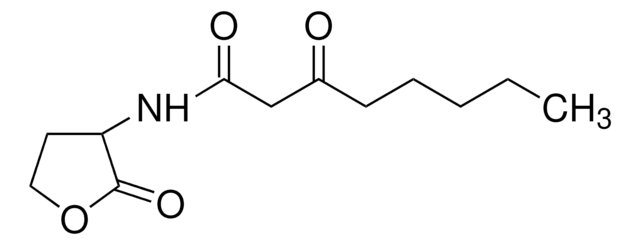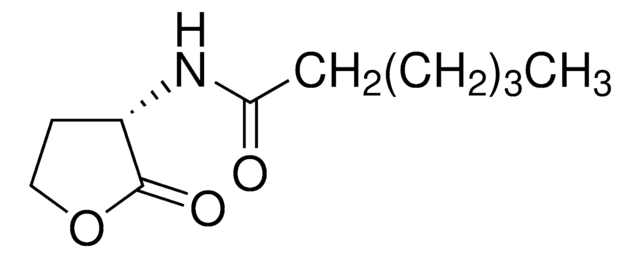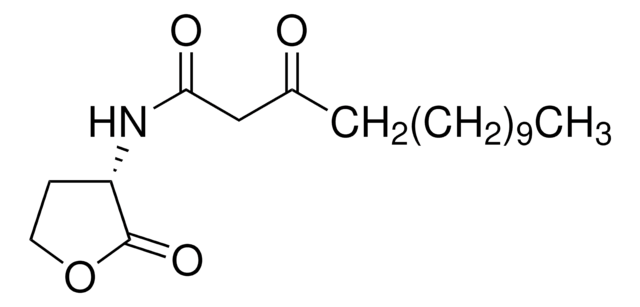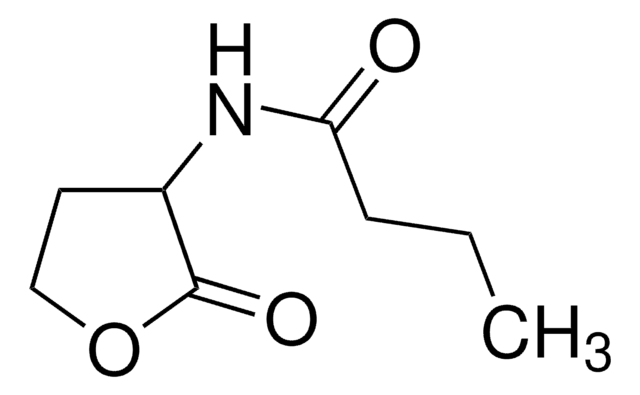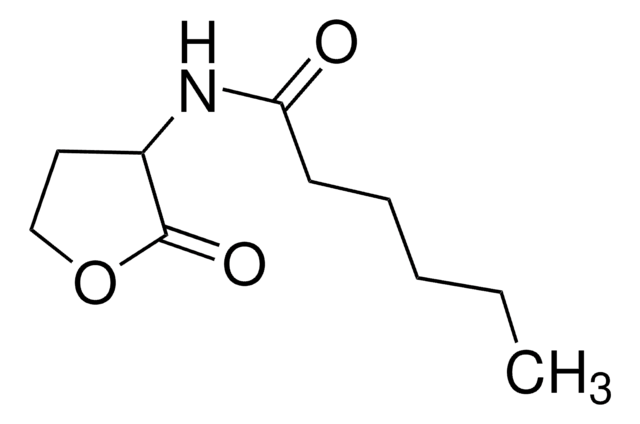68873
N-(3-Hydroxydecanoyl)-DL-homoserine lactone
Synonim(y):
3-Hydroxy-N-(tetrahydro-2-oxo-3-furanyl)decanamide, N-[(RS)-3-Hydroxydecanoyl]-DL-homoserine lactone
About This Item
Postać
powder
temp. przechowywania
−20°C
ciąg SMILES
O=C(CC(O)CCCCCCC)NC1C(OCC1)=O
InChI
1S/C14H25NO4/c1-2-3-4-5-6-7-11(16)10-13(17)15-12-8-9-19-14(12)18/h11-12,16H,2-10H2,1H3,(H,15,17)
Klucz InChI
DOICJCCMIBBSOO-UHFFFAOYSA-N
Działania biochem./fizjol.
Kod klasy składowania
11 - Combustible Solids
Klasa zagrożenia wodnego (WGK)
WGK 3
Temperatura zapłonu (°F)
Not applicable
Temperatura zapłonu (°C)
Not applicable
Certyfikaty analizy (CoA)
Poszukaj Certyfikaty analizy (CoA), wpisując numer partii/serii produktów. Numery serii i partii można znaleźć na etykiecie produktu po słowach „seria” lub „partia”.
Masz już ten produkt?
Dokumenty związane z niedawno zakupionymi produktami zostały zamieszczone w Bibliotece dokumentów.
Klienci oglądali również te produkty
Nasz zespół naukowców ma doświadczenie we wszystkich obszarach badań, w tym w naukach przyrodniczych, materiałoznawstwie, syntezie chemicznej, chromatografii, analityce i wielu innych dziedzinach.
Skontaktuj się z zespołem ds. pomocy technicznej